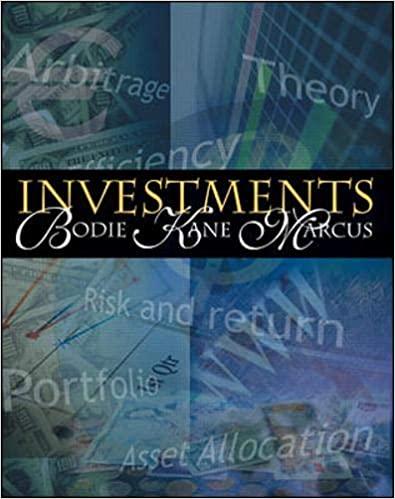Question
Suppose that the standard deviation of returns from a typical share is about 0.40 (or 40%) a year. The correlation between the returns of each
Suppose that the standard deviation of returns from a typical share is about 0.40 (or 40%) a year. The correlation between the returns of each pair of shares is about 0.3.
a. Calculate the variance and standard deviation of the returns on a portfolio that has equal investments in 2 shares, 3 shares, and so on, up to 10 shares.
b. Use your estimates to draw a graph of the variance on the y-axis and the number of shares on the X-axis. How large is the underlying market variance that cannot be diversified away?
c. Now repeat the problem, assuming that the correlation between each pair of stocks is zero.
This question has been posted before, but can someone explain it in more simple terms for all the parts for the answers? Like for example, are there certain set equations where we just stick the figures in for example part a? --> 1/N 0.4 2 + (N2N)/ N2 0.3 0.4 0.4.
What does diversified away means?
Thank you, I'm just struggling to get my head around the answer someone else has posted.
Step by Step Solution
There are 3 Steps involved in it
Step: 1

Get Instant Access to Expert-Tailored Solutions
See step-by-step solutions with expert insights and AI powered tools for academic success
Step: 2

Step: 3

Ace Your Homework with AI
Get the answers you need in no time with our AI-driven, step-by-step assistance
Get Started


